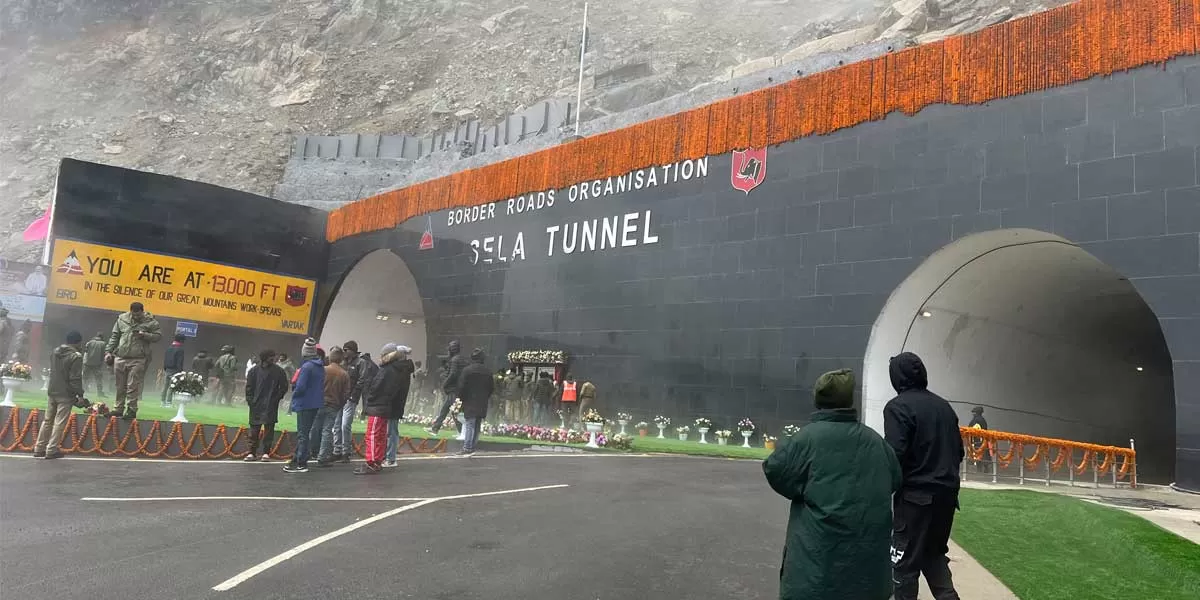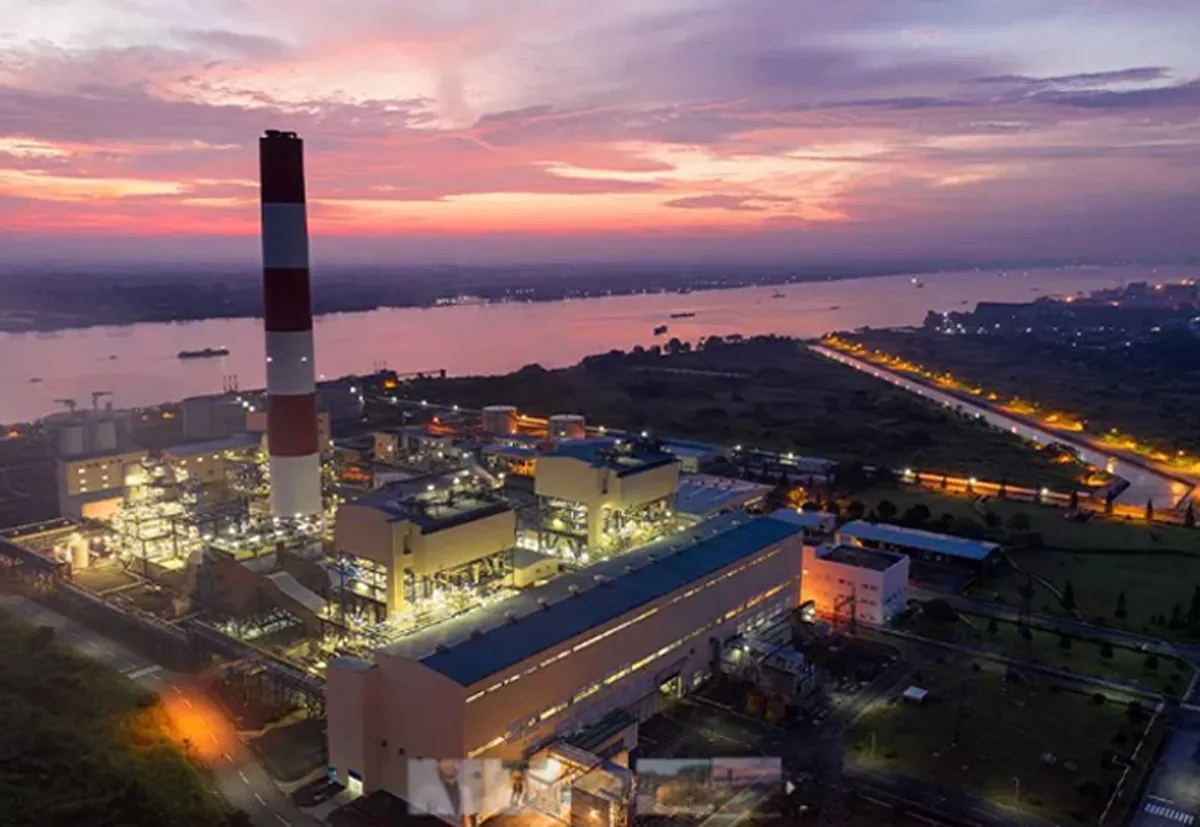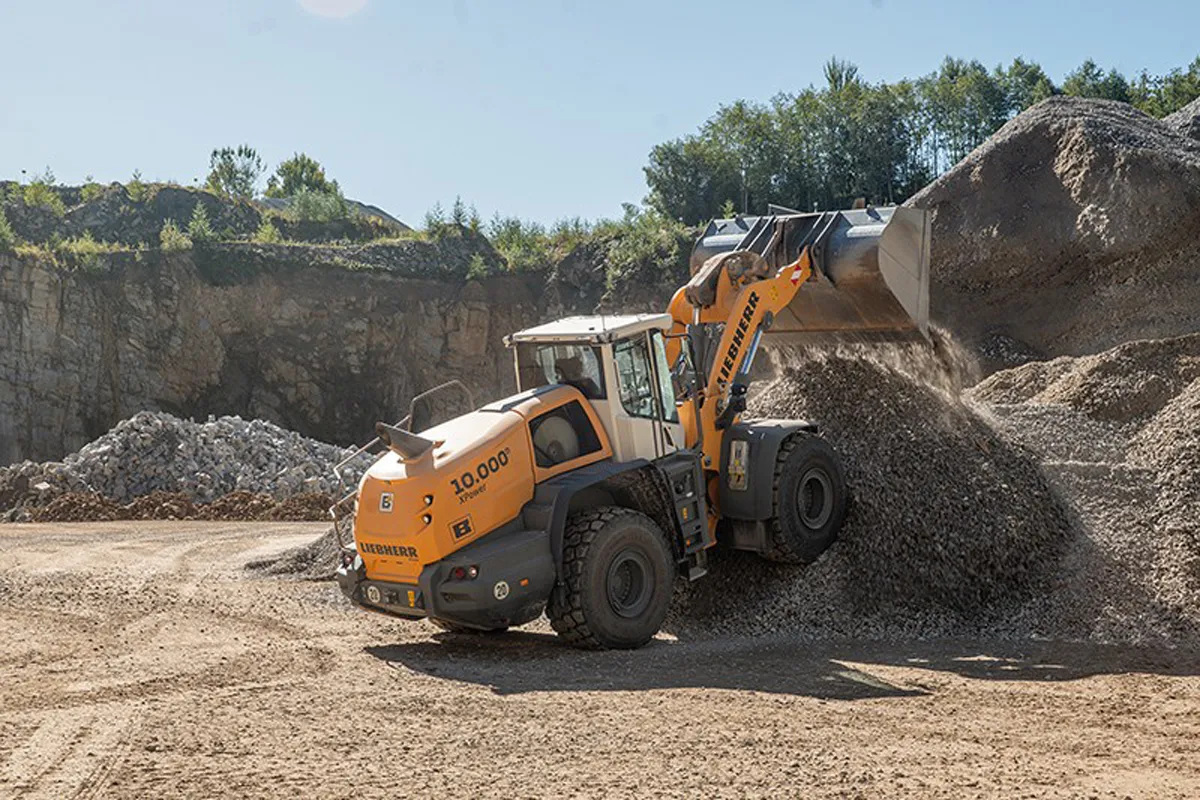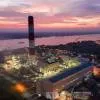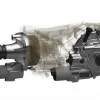The world’s longest bi-lane tunnel project, Sela Pass, was constructed by the Border Roads Organisation (BRO) under Project Vartak at an altitude over 13,000 ft above sea level and at a cost of Rs.8.25 billion to enhance all-weather connectivity and facilitate rapid military deployment to Arunachal Pradesh’s Tawang and Kameng regions along the China frontier. With considerable experience and a stellar track record in managing complex large-scale projects, Patel Engineering was chosen to execute the project. Weather conditions in the region are so harsh that temperatures plummet to as low as -20°C, causing diesel to freeze, and heavy snowfall and landslides on the Balipara-Chariduar-Tawang Road posed challenges. The enormity of the task can be judged by the fact that it required over 9 million man-hours with an average of 650 workers contributing daily for five years. Also, 71,000 metric tonne of cement, 5,000 metric tonne of steel and 800 metric tonne of explosives were used for construction.
The significance of Sela
“The project is distinguished by several unique features,” says Kavita Shirvaikar, Managing Director, Patel Engineering, about its USP adding, “It ensures all-weather connectivity between Guwahati in Assam and Tawang in Arunachal Pradesh, providing a vital passage even during harsh winter conditions, avoiding the challenges of snow clearance and facilitating year-round. Strategically located near the Sino-India border, the tunnel enables swift movement of troops, weapons and machinery, thereby enhancing connectivity and security in the region, which is crucial for defence logistics.”
The project includes two tunnels: Tunnel 1 spanning 1,003.34 m and main tunnel T2 spanning 1,594.38 m with an escape tunnel of 1,584.38 m as well as a road of about 8.7 km facilitating smoother and more efficient transit. “Overall, the tunnel is a remarkable infrastructure achievement, offering robust connectivity and strategic advantages in a challenging and critical region,” she adds.
Significant milestones included the painstaking excavation of Tunnels 1 and 2, which required advanced boring techniques and installation of vital safety measures, including emergency exits, fire-fighting gear and jet fan ventilation systems to fulfil rigorous safety standards. As Shirvaikar elaborates, to ensure the long-term integrity of the tunnels, novel techniques were used to stabilise unstable rock formations and properly manage water incursion. Stringent quality control measures were enforced to guarantee the reliability of materials used, with rigorous testing and inspection protocols in place. Addressing environmental concerns, the project implemented sustainable practices to mitigate ecological impact, including measures to minimise deforestation and soil erosion.
Strategic bulk ordering, local sourcing and thorough quality checks were necessary to overcome logistical and procurement obstacles. These tactics were bolstered by efficient workforce management techniques like rotational shifts and local labour participation. “Improving the transport infrastructure made it easier to deliver materials on schedule, highlighting the project’s importance in improving strategic mobility and regional connectivity close to China’s Line of Actual Control (LAC),” she adds. “In conclusion, the project exemplifies unparalleled engineering prowess, strategic management and environmental stewardship in challenging Himalayan terrain.”
Big BRO
The engineering marvel has been described by BRO as one of India’s most challenging infrastructure endeavours. As Sela Pass is visible to Chinese soldiers from the LAC, the tunnel goes under the pass, overcoming this military vulnerability. The high tunnel clearance accommodates all military vehicles and heavy artillery guns. The tunnel will boost quick military mobilisation to the border sector, drastically reducing travel time for convoys. “The Sela Tunnel stands as a remarkable achievement,” says Lt Gen Raghu Srinivasan, Director General, BRO. “This twin-tunnel marvel on the Balipara-Chardwar-Tawang Road incorporates the highest safety standards, including SCADA systems, mechanical forced ventilation, advanced fire-fighting mechanisms and comprehensive lighting and signage. It is a matter of immense pride and satisfaction for BRO that Prime Minister Narendra Modi dedicated the strategic Sela Tunnel to the nation on March 9, 2024. Incidentally, the foundation stone of the project was also laid by PM Modi on February 9, 2019. The Sela Tunnel exemplifies our commitment to national security and regional advancement, marking a significant milestone in our nation’s infrastructure progress.”
Construction challenges
Throughout the project construction, significant technical difficulties were encountered. As Shirvaikar shares, “There was icicle formation inside the tunnel, leading to delays in concrete production. Extreme weather conditions with temperatures as low as -10°C to -20°C posed additional challenges. Managing water intrusion and addressing cavity formation in the rugged terrain were also critical obstacles. In winter, temperatures may dip to -20°C and the oxygen level falls. Imagine its impact on the performance of men and machines. Apart from 50 highly skilled engineers, we had a workforce of over 800. We had to arrange for their accommodation and transportation while ensuring their safety. Normal diesel would freeze at those sub-zero temperatures and we had to use special winter-grade diesel. We also had to adopt the most modern technology to overcome the challenging weather conditions. Precise planning was key to successful project completion. Also, necessary food and water arrangements had to be made as the market was situated far away from the project site.”
Advanced technologies
The formation of icicles inside the tunnel caused a delay in concreting and ingress of water during construction and cavity formation affected the progress of work. “Advanced technologies played a crucial role in overcoming challenging conditions during construction,” explains Shirvaikar. To ensure structural integrity of the tunnel and worker safety amid these challenges, the project implemented the New Austrian Tunnelling Method (NATM). What is unique about this method is that it leverages the inherent strength of nearby rock formations to sustain tunnels. Owing to the flexibility of this method, tunnel designs can be dynamically adjusted in reaction to current geological data, allowing for effective construction under a variety of geological circumstances. Support infrastructure costs are also lowered. To guarantee structural integrity during excavation, NATM needs staff with specialised knowledge in geotechnical engineering. “As long as it is applied with knowledge, NATM continues to be the method of choice for projects needing quick construction in difficult terrain,” she adds. “Its implementation contributed to a shortened construction timeline and heightened overall project efficiency. The strategic application of modern engineering techniques, particularly NATM, distinguishes the project from other intricate infrastructure endeavours undertaken by the company.”
Safety features and protocols
“The safety features represent an advanced approach,” as Shirvaikar tells us. First, the ventilation system ensures tunnel air quality with intake portals for fresh air and exhaust fans to expel pollutants and regulate oxygen levels. It prevents harmful gas build-up like carbon monoxide, safeguarding user health and safety. Strategically placed jet fans enhance safety by optimising airflow. During fires, they swiftly disperse smoke, regulate temperatures and eliminate stagnant air, improving visibility and air quality. This proactive approach aids fire-fighting efforts by creating a controlled environment. In terms of fire-fighting capabilities, the tunnel features essential tools like strategically placed hydrants, extinguishers and fire-resistant materials. Automated detection systems continuously monitor conditions, swiftly identifying hazards such as fires or excessive smoke. They trigger rapid responses like activating sprinklers or foam-based suppression systems, enhancing safety measures. The backbone of the safety infrastructure is a Supervisory Control and Data Acquisition (SCADA) system, which provides real-time monitoring and control of various parameters, including air quality metrics, temperature, humidity, traffic flow and fire alarms. Operators receive instant alerts and detailed data via the SCADA system, enabling swift responses to emergencies and proactive risk mitigation.
“During the project, stringent safety protocols were meticulously implemented to safeguard workers and engineers onsite amid the challenging terrain and severe weather conditions with approximately 762 days of high snowfall or rainfall and 832 days with freezing temperatures up to -20°C,” she continues. “Comprehensive measures included daily weather monitoring using advanced meteorological tools to anticipate high snowfall or rainfall. Inclusion of an escape tube alongside the main tunnel with cross passages at every 250 m facilitates swift evacuation and emergency response capabilities, vital during adverse incidents. Designed to accommodate heavy traffic density with safe speed limits, the tunnel ensures passage for up to 3,000 cars and 2,000 trucks daily with a maximum speed of 60 kmph.”
Operational preparedness
“To ensure daily efficient operation and maintenance of the tunnel, which is situated 400 m below the challenging Sela Pass, in the face of heavy rainfall, landslides and snowfall, stringent measures are essential,” points out Shirvaikar. Regular maintenance includes servicing of equipment, clearing debris and tightening bolts to uphold structural integrity. Continuous monitoring of weather conditions and round-the-clock surveillance of traffic enable prompt responses to emergencies. Additional safeguards such as an early warning system (EWS), well-maintained emergency exits, fire suppression systems and efficient tunnel ventilation further mitigate risks. The presence of a skilled workforce and close collaboration with local authorities for weather monitoring and disaster management enhance
operational preparedness.
Collectively, all these integrated features establish the Sela Pass tunnel as a benchmark for secure and efficient tunnel infrastructure. Beyond the bolstering of our defence capabilities, this strategic infrastructure ushers in a new era of economic prosperity and promises to foster trade, tourism, employment and overall socio-economic development for the Tawang region.
- R SRINIVASAN
